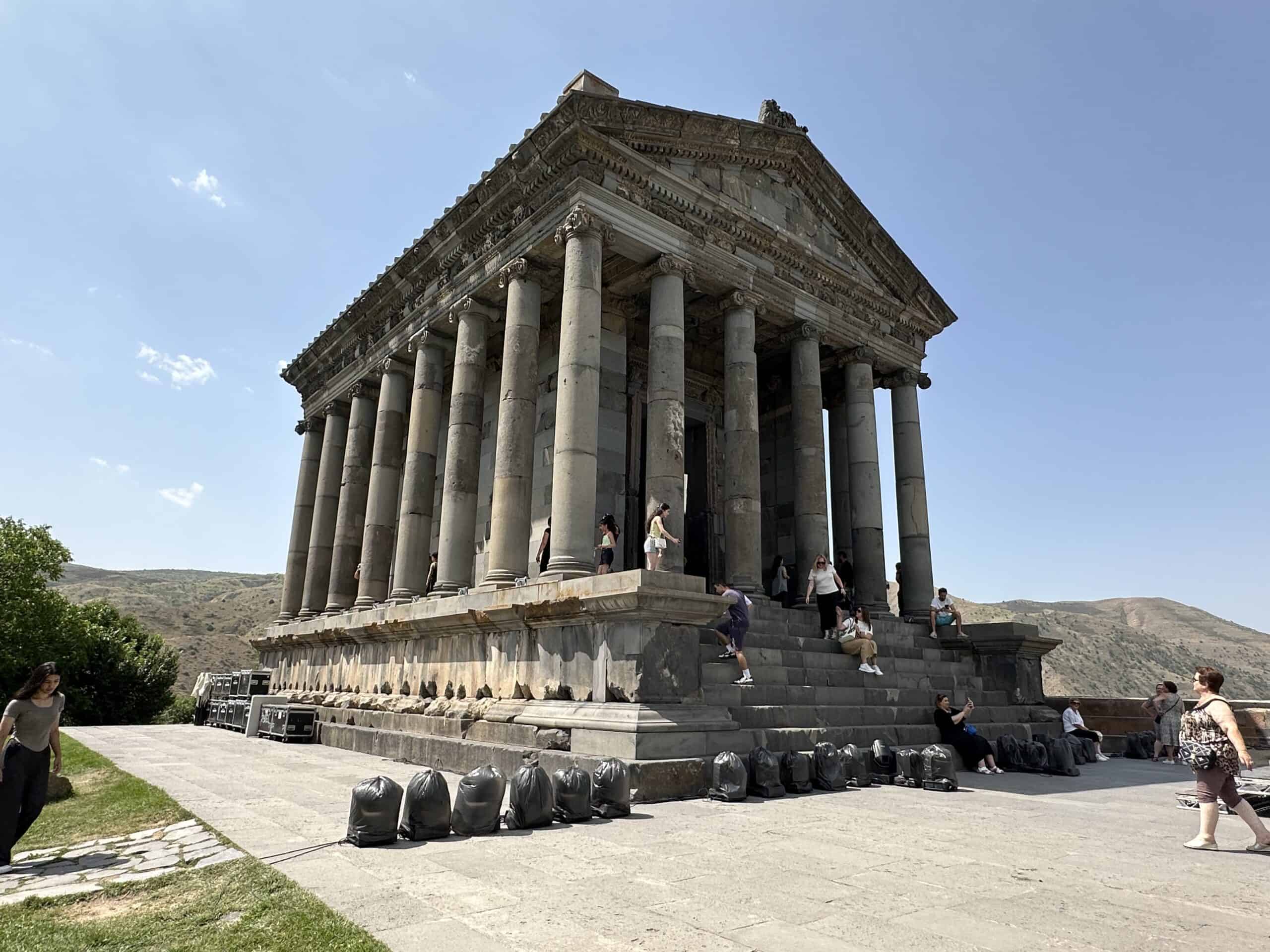
The Temple of Garni is the only surviving monument from the pagan and Hellenistic period in Armenia.
Made during the first century AD in Ionic style, it was dedicated to the pagan sun god Mihr.
Following the conversion of Armenia to Christianity at the beginning of the fourth century it was converted into the summer residence of the sovereign.
The ancient temple collapsed during the earthquake of 1679 and at the beginning of the nineteenth century archaeologists recovered the remains and between 1969 and 1975 it was rebuilt.
Today in the vicinity of the temple you can see the ruins of the royal palace with the floor decorated with mosaics inspired by figures from Greek mythology.
A few kilometres from the Garni Temple is the Geghard Monastery.
The monastery of Geghard was founded in the fourth century by St. Gregory, in the place where there is a spring inside a cave, a spring that in times before Christianity was considered sacred.
For this reason the original name of the monastery was that of Ayrivank, which means “the monastery of the cave”, while today it is known by the name of Geghard, which means “the monastery of the spear”, with reference to the spear that wounded Christ during the crucifixion, which according to a legend would have been brought to Armenia by the apostle Thaddeus and kept in the museum of Echmiadzin along with many other relics.
The monastery, partially carved into the rock, was built with a Greek cross plan and in the southern façade, has a portal with a lion carved attacking an ox. Four columns in the center of the hall support a stone roof with a central hole that allows light to enter.
During the Soviet period the monastery had a long decline, the main church was even used to shelter flocks of sheep during the winter.
In 2000 Geghard Monastery became part of the UNESCO World Heritage List.

















